- News
- Reviews
- Bikes
- Components
- Bar tape & grips
- Bottom brackets
- Brake & gear cables
- Brake & STI levers
- Brake pads & spares
- Brakes
- Cassettes & freewheels
- Chains
- Chainsets & chainrings
- Derailleurs - front
- Derailleurs - rear
- Forks
- Gear levers & shifters
- Groupsets
- Handlebars & extensions
- Headsets
- Hubs
- Inner tubes
- Pedals
- Quick releases & skewers
- Saddles
- Seatposts
- Stems
- Wheels
- Tyres
- Tubeless valves
- Accessories
- Accessories - misc
- Computer mounts
- Bags
- Bar ends
- Bike bags & cases
- Bottle cages
- Bottles
- Cameras
- Car racks
- Child seats
- Computers
- Glasses
- GPS units
- Helmets
- Lights - front
- Lights - rear
- Lights - sets
- Locks
- Mirrors
- Mudguards
- Racks
- Pumps & CO2 inflators
- Puncture kits
- Reflectives
- Smart watches
- Stands and racks
- Trailers
- Clothing
- Health, fitness and nutrition
- Tools and workshop
- Miscellaneous
- Buyers Guides
- Features
- Forum
- Recommends
- Podcast
feature
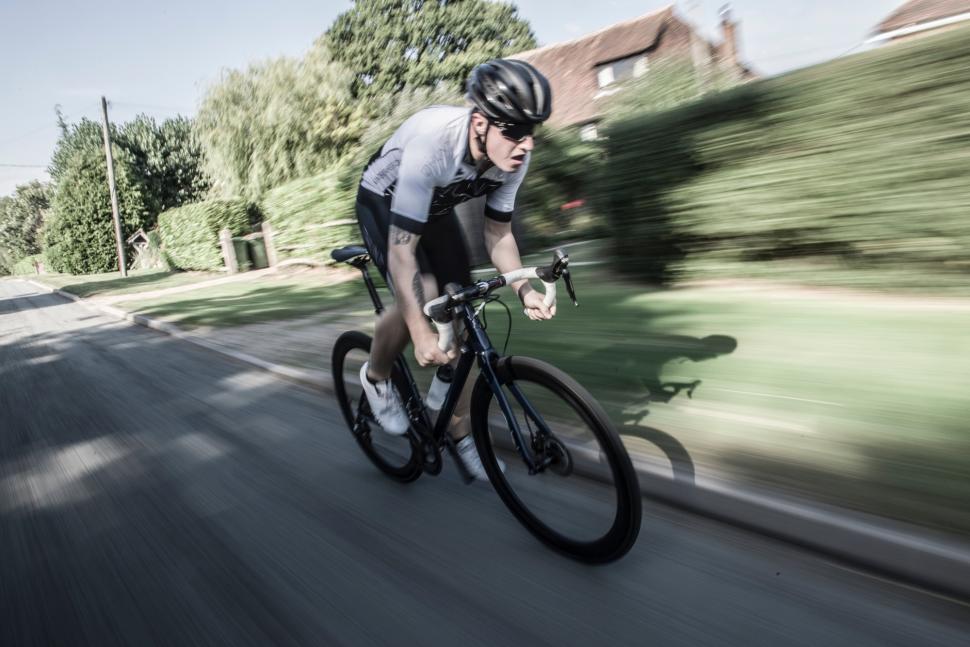 Hunt feature part 2 - 18.jpg
Hunt feature part 2 - 18.jpgReinventing the (aero disc-specific) wheel with Hunt - Pt 2
Wheel brands bombard us with aerodynamic data that’s designed to impress us, but how relevant are the claims they make to the likes of you and me? Hunt Wheels has been looking at the importance of different yaw angles (yaw is the apparent wind angle resulting from the actual speed and direction of the wind and the speed and direction of the bike and rider) for riders in real world conditions and the results are interesting. In this quick update, we’ll go through what Hunt has found.
Hunt is attempting to invent a new type of wheel – a disc-specific aero wheel for 28mm tubeless tyres, to be precise – and things have been going well. As we found out in the first part of this series, Hunt began by developing several prototype wheels, then taking them to the wind tunnel to be tested alongside competitor wheels, and has been pleased with the results.
Check out Reinventing the (aero disc-specific) Wheel with Hunt - Pt I here.
As mentioned last time, the wind tunnel might give you loads of figures but you then need to interpret those figures and there’s no standard way of doing this. One wheel design might be super-efficient straight into the wind, for example, but it might be far less impressive at high yaw angles. Another wheel might be less efficient straight into the wind but far better than a competitor at higher yaw angles. Which is the more efficient wheel overall?
That’s not an easy question. Hunt set out to get some hard data upon which to base the further development of its wheel.
“We wanted to find out about the real conditions in the UK,” says Luisa Grappone, Hunt’s Engineering and Product Manager. “I found official information from the UK government and I realised that here in the UK everywhere is quite windy! In other countries the average wind speed might be lower.”
“According to this information, the average wind speed over the past 17 years, considering just the ‘cycling months’, is quite high at around 15km/h (9.3mph).”
Cycling months? Rather than taking the year-round average, Hunt decided to use wind data relating to the period between April and September because that’s the most popular time for cycling.
What can you do with that figure? Well, you can calculate the yaw angle distribution considering different cyclists’ speeds. Basically, it can help you workout which yaw angles are most important for different riders.
“Considering all the possible effective wind angles from 0° to 180° (it would be the same from 180° to 360° so I avoided the worthless computation), by playing with different values of a cyclist’s speed, we can derive the apparent wind speed perceived by the cyclist and from that calculate the apparent wind angle, the yaw angle.
“Our idea was to find out what can happen during an amateur bike ride – which wind condition and yaw angles any of us can experience when going out for a ride, from our place and back home, following an almost circular path. We can experience all the different wind conditions in just one ride and, as a consequence, we can perceive wind from very different angles.”
Okay, so how do you get that yaw angle data? Maths.
If you really want to know, the apparent wind speed is given by:
Vw = sqrt ((Vb+Wcosα)^2+(Wsinα)^2)
And the yaw angle is given by:
β = cos-1 ((Vb + wcosα) / Vw)
Where:
Vw is the apparent wind speed
Vb is the cyclist speed
W is the wind speed
α is the wind angle with respect to the direction of travel
β is the yaw angle
Results
Luckily, if that lot doesn’t mean anything to you, it doesn’t really matter. Luisa’s spreadsheet does all the heavy lifting and spits out the results as a graph. What does it tell us?
First, the faster you ride, the more time is spent at lower yaw angles. That’s pretty obvious, right? Stick your head out of a car window at speed (health and safety: don't actually do it!) and you'll know that whatever the wind is doing, the apparent wind is pretty much right in your race. The quicker you go, the more importance your speed makes to the apparent wind.
With the wind speed at the UK average of 15km/h, a rider doing 45km/h (28mph) will never experience yaw greater than 20°.
Let’s be honest, though, how much of your time do you spend riding at 45km/h? We might all wish we could hold that sort of speed for long periods, but the reality is that we can’t. So what happens if you’re riding slower than that?
At 33km/h (20.5mph) and the same 15km/h wind speed, a rider will experience yaw of up to 28° and only 57% of their time will be spent with a yaw of 20° or below – so the results are quite different.
If you go down to 27km/h (16.8mph) only 40% of your time is spent at a yaw angle of 20° or below, and 17% of your time is spent at a yaw angle of 34°.
“What is interesting is that a normal cyclist, riding at lower speeds than the 45km/h that is always considered for wind tunnels tests, will very likely spend more time at higher yaw angles,” says Luisa.
Using that information
Okay, so what happens next?
“In the wind tunnel we found that our best prototype wheel – proto 3 – is better than competitor wheels in some yaw angle conditions but in other yaw angle conditions it is slightly worse. We are now trying to combine this wind tunnel data with our wind calculations (above), saying that it’s important to be good at higher yaw angles but our wheel needs to be good at lower yaw angles as well. We are now modifying some areas of the rim slightly.”
Armed with data that says a wheel’s aerodynamic performance at higher yaw angles is important at realistic cycling speeds, Hunt will next month be heading back to the GST (Gesellschaft für Strömungsmeßtechnik) wind-tunnel in Immenstaad am Bodensee, Germany.
Hunt wants to test slight changes to proto 3, along with competitor wheels, from at least -30° to +30° because its data suggests that those wider angles are relevant. The wheels can’t be tested at those angles while fitted to a bike because the wind tunnel jig can only handle -20° to + 20°, but the movement of the platform can be increased if the wheels are tested alone, so that’s what Hunt will be doing.
“We want to find out in the wind tunnel whether small changes can lead to an improvement in the overall performance of the rim considering all yaw angle conditions so that’s our next step,” says Luisa.
Mat has been in cycling media since 1996, on titles including BikeRadar, Total Bike, Total Mountain Bike, What Mountain Bike and Mountain Biking UK, and he has been editor of 220 Triathlon and Cycling Plus. Mat has been road.cc technical editor for over a decade, testing bikes, fettling the latest kit, and trying out the most up-to-the-minute clothing. He has won his category in Ironman UK 70.3 and finished on the podium in both marathons he has run. Mat is a Cambridge graduate who did a post-grad in magazine journalism, and he is a winner of the Cycling Media Award for Specialist Online Writer. Now over 50, he's riding road and gravel bikes most days for fun and fitness rather than training for competitions.
Latest Comments
- Sredlums 3 sec ago
Props for weighing in the environmental concerns.
- tony.westclassics@live.co.uk 2 min 35 sec ago
If your running 11 speed, Shimano chain will run with Campag
- polainm 9 min 22 sec ago
Hacks never let truth/facts get in the way of whipping up hatred to increase click throughs.
- Rendel Harris 15 min 54 sec ago
Well yes, but that doesn't mitigate the essential flaw in her argument which seems to be that the people on illegal electric motorbikes are using...
- brooksby 1 hour 57 min ago
A picture: (edit) Hmm, it's the right way up on my phone...
- muhasib 7 hours 16 min ago
"Clunie, who was stopped at the lights at the time of the crash,"...
- Miller 10 hours 57 min ago
I'm reading this as the komoot founder cashing out? Tough on the staff who'll get a redundancy notice and not a payout.
- Rendel Harris 11 hours 23 min ago
You can pick them up for £129 at Cyclestore now with free postage.
- David9694 13 hours 54 min ago
I certainly don't put every story about every fatal crash I encounter, this pair just got me curious, like why are 90 year olds still driving and...
- Vo2Maxi 14 hours 27 min ago
Over 25 years ago now, I was on the Ideal Travel winter training camp in Majorca....
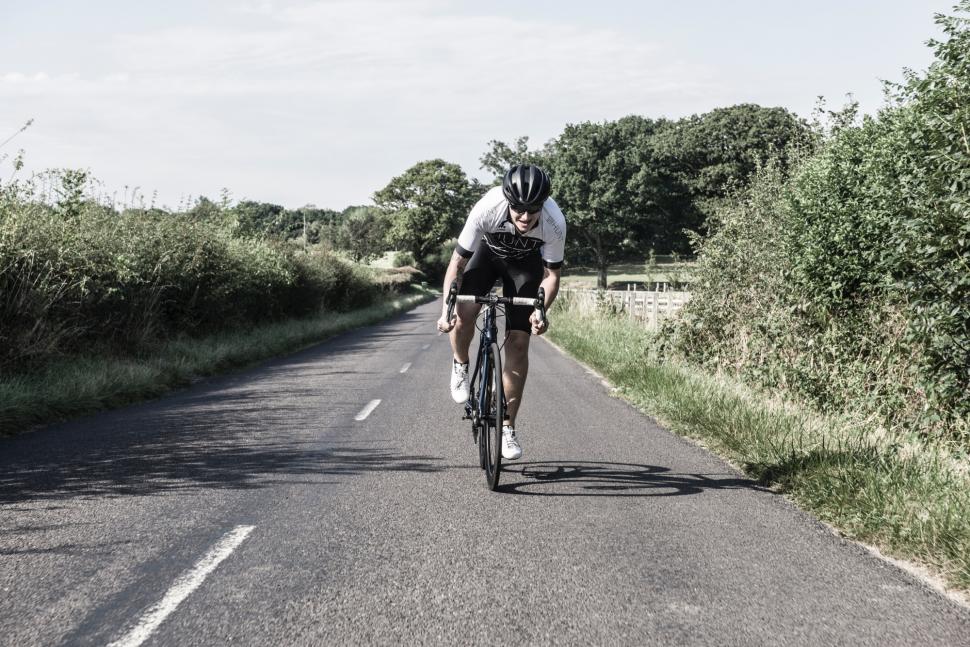
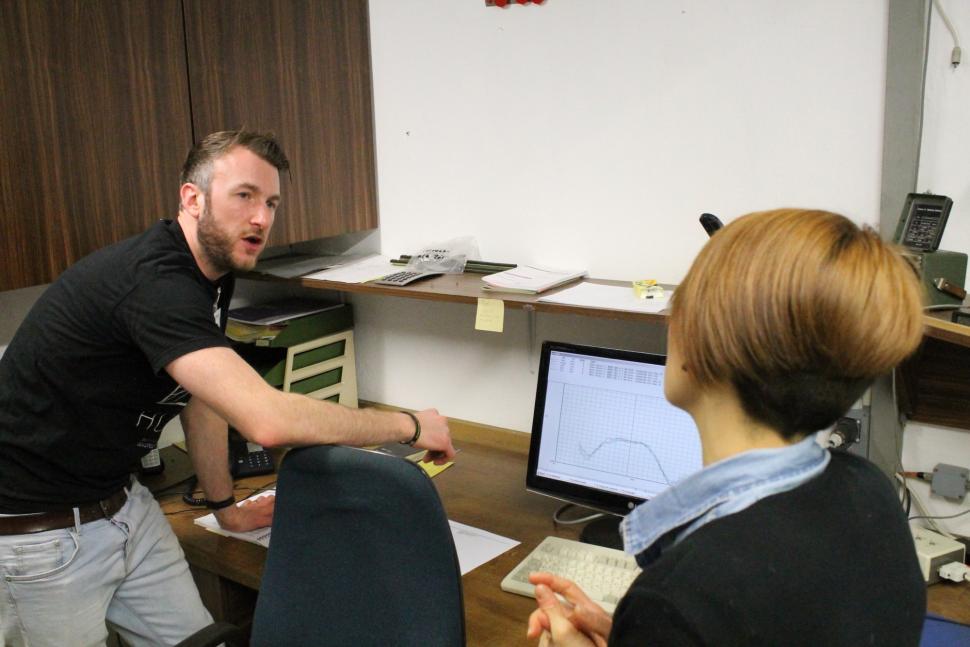

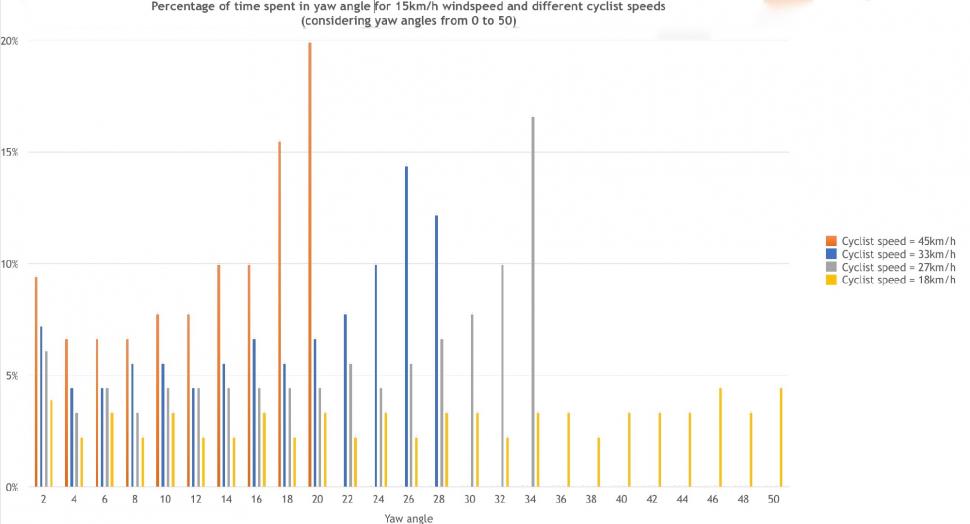
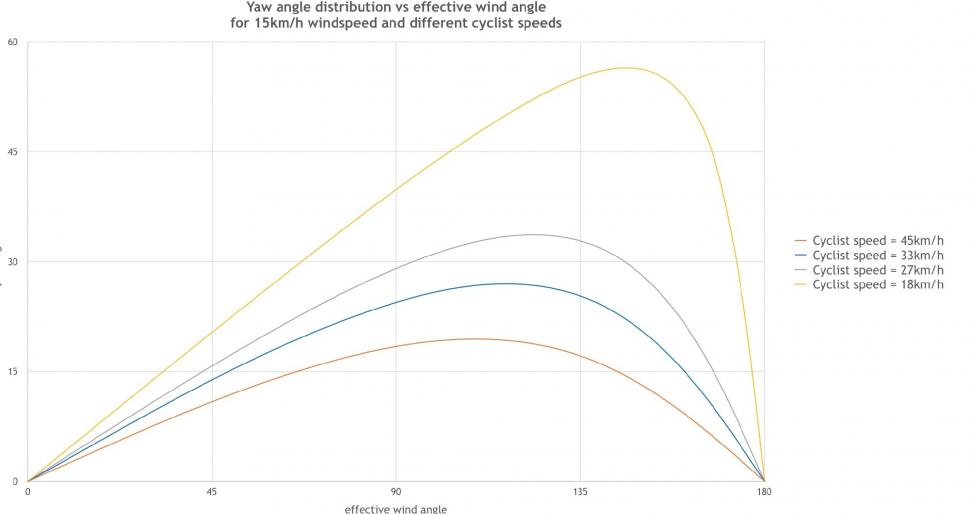
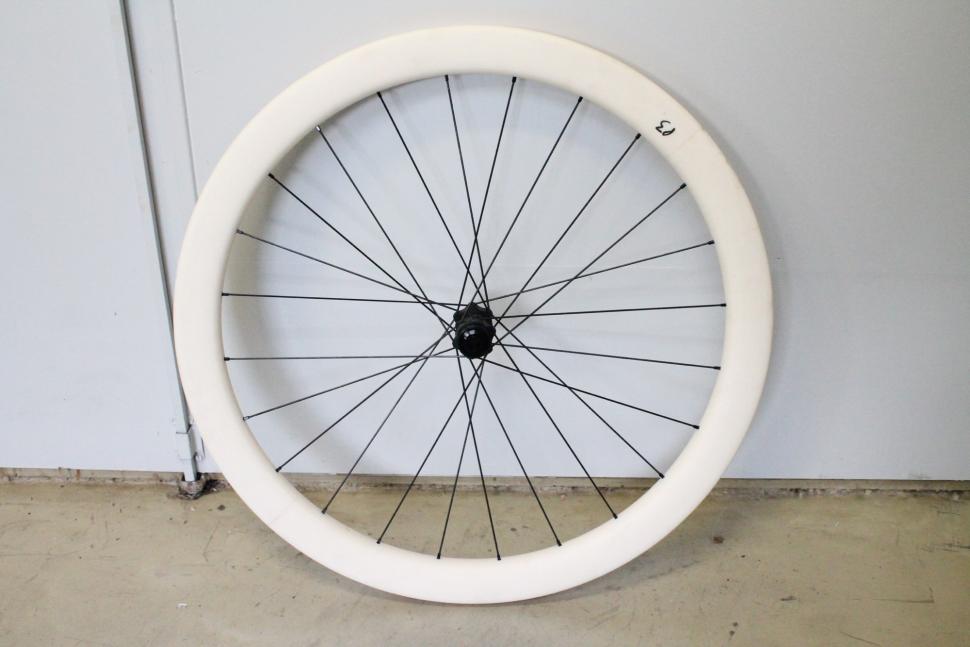
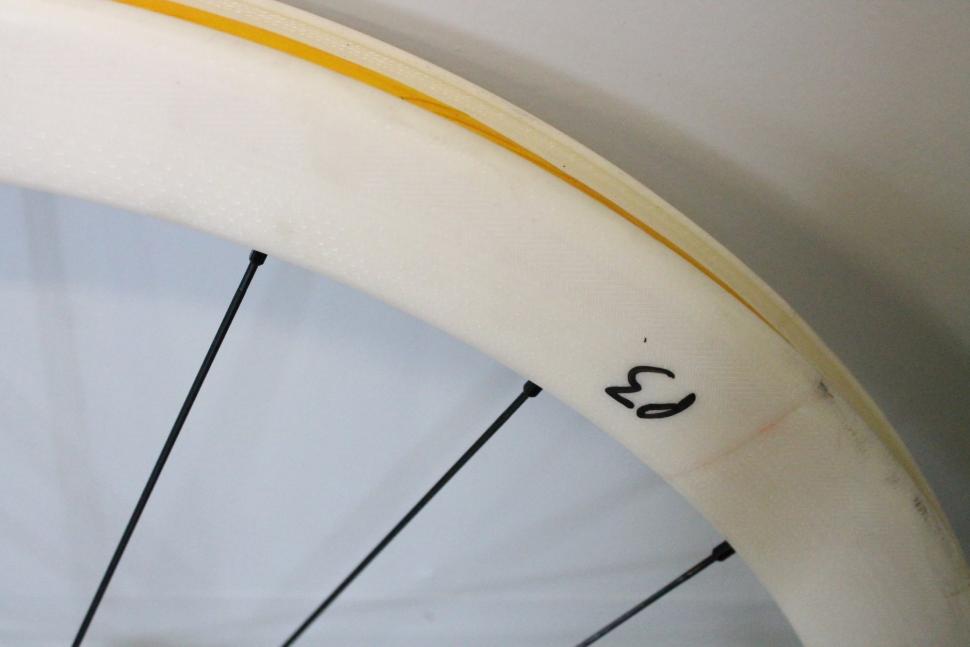
Add new comment
9 comments
I've downloaded the wind speed data, as far as I understand, this wind speed data is measured the "standard" way, at 10 meters above the ground.
The wind speed at the ground is significantly lower, easily half that of the freestream atmospheric velocity.
https://www.google.co.uk/search?biw=1366&bih=637&tbm=isch&sa=1&ei=xG-tWp...
Yaw angles greater than 20 degrees aren't common. I think what gets REALLY interesting is trying to work out is if the wheels are operating in the viscous sublayer, buffer layer or fully turbulent region.
Nice article. My one question would be if the av wind speed as stated is correct for most people most of the time? Additionally I am unsure if stated wind speeds are reflective of the real world at the height of a wheel. There is plenty of things that affect wind speed at that height.
Hi Jimt,
You are right, real world conditions and correct wind speed values at wheels height is what we are considering next, by making real world tests with speed sensors placed on several positions on the bicycle for a more precise measurements collection. We’re still working on the best way to do this, but it’s something we’re very excited about. Wind tunnel tests, though, still remain one of the very few ways to provide reliable results that could be repeated and verified in a way almost not possible on the roads outdoors.
Luisa Grappone,
Engineering and Product Manager @HuntBikeWheels
On that last point.. as they're apparently designing this with 28mm tyres in mind, then I think it's a given the rim will be reasonably wide and the extra drag of that width is small change at anything outside of zero yaw compared to getting the flow right over the rim and tyre combination elsewhere.
I find the information interesting as I've often thought that the yaw experienced by a slower rider would not necessarily mirror those found in tests. Most current wheelsets labelled 'aero', particularly those with a U-section profile, are already pretty efficient at a range of yaw angles. I'm not saying that Hunt shouldn't continue to develop their aero rims, but the way it is presented does smack somewhat of selling the tiniest of marginal gains to people - mostly leisure riders - who could make far bigger gains in a number of other ways. Are these differences even measureable in the real world?
I don't think TTers are their target market. Virtually all time trial bikes use rim brakes, not discs. The women I know racing TTs, including those aged 60+, already use deep section carbon front wheels and average over 20mph (although possibly not on the occasional 12-hour, which will include time off the bike). They won't buy another wheelset because it claims to be better at high yaw angles.
Very few youth riders participate in time trials (and you must be at least 12 years old to ride on the road). Most 12 and 13 year olds won't hold an efficient position for long anyway. There is also a rim depth limit of 35mm for Youth B and younger in BC races. The benefits of drafting in bunch racing will be many times greater than even the most aero front wheel and AFAIK most circuit races are won from a group rather than a solo break.
If this wheel follows the recent convention for a wider section then you'd also want wider tyres, which are likely to have less aero than a typical 23mm tyre used for time trials.
The time at greater yaw angles goes up as your bike-speed is less. Therefore a wheel designed to go better at higher yaw angles will save the slower cyclist time or energy.
This does, though, beg the question. Why would a cyclist who cyles at an average of 16-17mph want to save time or energy? In what way does it improve her cycling? It won't help win a race, that's fer sure.
If the cyclist does go significantly faster because of the wheel coping better with higher yaw angles of a wind, this will reduce the yaw angle and hence the wheel's efficiency at saving enery, is this not so? What does the curve look like that represents gain in speed against decrease in yaw angle against reduction in the wheel's ability to save energy?
Put another way, how much faster will a 16mph average cyclist go with a pair of these wheels before the increased speed negates their advantage?
There's a few statements and assumptions there that have a bearing on the answer, but the short answer is that Hunt have already identified your final question, hence are going back to the wind tunnel to flatten the curve you are talking about.
I have coached plenty of people, for whom 16 - 17 mph is a race winning, or significantly important speed. This includes young teen agers (10 - 13) in TTs, older ladies (60+) in TTs and endurance races, and people of all genders and ages doing Ultraendurance rides. (RAAM in a number of categories is won at speeds < 20 mph.), 600km+ rides, outside of the very elite are typically won at 14 - 16 mph.
In what way does it improve her cycling? It helps her go faster, which is ultimately the pursuit of most peple in any level of competition. Wether that is just a faster time for herself, within her club TT, or personaly challenges on a local road. Not all 'races' are won on a podium.
Last part of your question, at what point do the gains from the wheel get cancelled out by the lower yaw losses? That can be worked out relatively easy from the equations above, and at 16 mph, at limiting yaw angles of about 34 - 30 deg, the answer is 2 - 2.6 kph. t's unlikely that the wheels are going to add that much to your speed for the same power output, so the answer to your question is that the increased speed, realistically, doesn't negate at any point the improved wider yaw angle efficiency. Hunt realise some gains might be made to the effiiciency at higher speeds, so are looking at rim improvements so a great proportion of those gains are retained at lower yaw angles.
Hi Cugel,
Thank you, those are all really good points. There will definitely be benefits to all riders from looking at performance across a wider range of ya angles, but actually we are not referring just to amateur riders or “slow” riders. It is also about the difference between drop bar road racing for several hours over varying gradients vs short efforts in a flat time trial
Our aim is to consider and replicate what usually happens during a standard professional road race and 45km/h, which is the standard speed for any wind tunnel test, is quite an important cycling speed value if compared to what even professional riders can achieve.
As an example, the average speed of last year’s Tour of Britain where the Canyon-Eisberg team raced on Hunt wheels was 42.4km/h, and for many periods of the racing speeds were of course lower than this
So high speeds are important when trying to define and develop the best aero rim profile, but the same rim shape has to be optimized at lower speed values as well, which is to say higher yaw angles, because at speed values just below 40km/h yaw angles such as 24, 26 becomes quite common. Also the difference between the performance of different wheels at low yaw is smaller than at high yaw angles, so in the mix for any ride, even at high average speed, the higher yaw angle performance will be important.
Luisa Grappone,
Engineering and Product Manager @HuntBikeWheels
That's a very narrow minded statement. Regardless of the speed at which they ride, surely any gain in efficiency is welcome. If not, why do people getting into road riding switch from hybrids to road bikes, baggies to lycra, etc.
Plus, as demonstrated by Swiss Side I believe, the slower rider can benefit as much (or maybe more) from aero improvements than a faster rider for one very simple reason - the same ride takes longer for the slower rider, so they are fighting the air for a longer period of time!
My average speed is generally about 16mph (crusing at 18-20mph on the flat, not so much going up the many hills round here), and have no intention of racing. I noticed the difference switching shallow rims to deeper, better designed wheels, and am more than happy with my decision to purchase them.